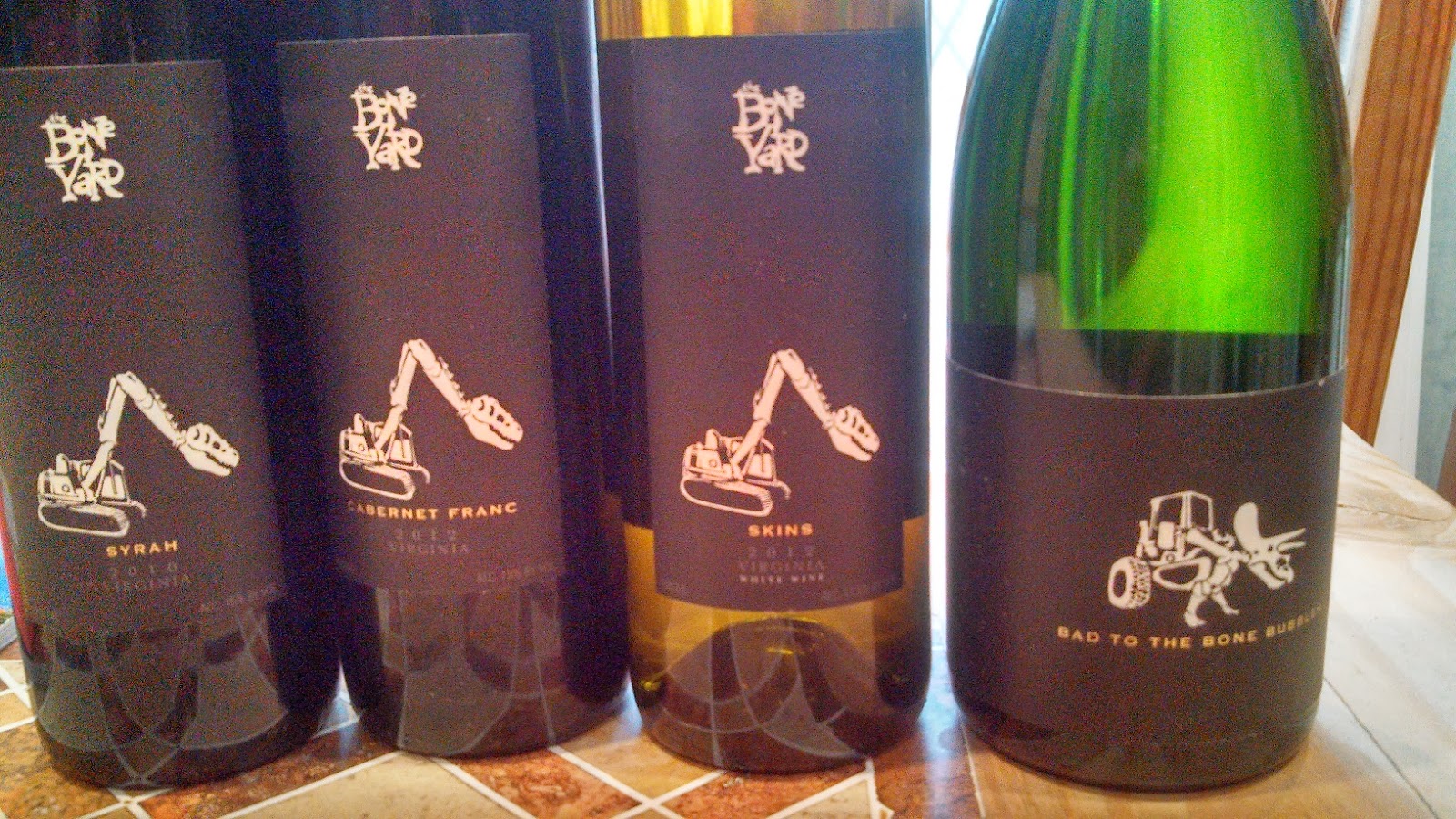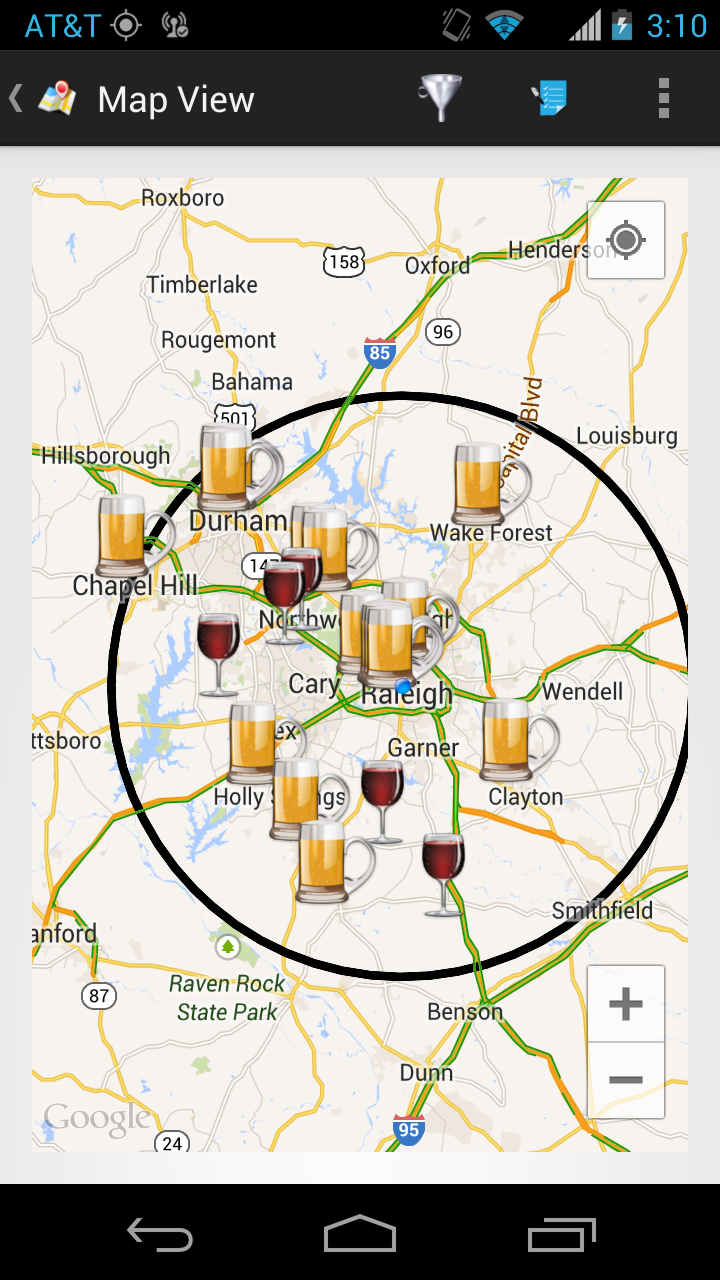This weekend I realized that it had been almost eight years since I last visited Willowcroft Farm Vineyards, located just southwest of Leesburg in Loudoun County Virginia. Don't know why the long hiatus, but Sunday night we used theCompass mobile application to navigate to the winery. Good timing, since the winery is celebrating it's 30th anniversary in 2014 - one of the oldest in the Commonwealth. Once a space opened at the tasting bar, our tasting room rep, Lydia, guided us through the winery's portfolio and history. (We also found a couple books in the tasting room that describe the history of the properties on Mt. Gilead.)
 All the wines we tasted were harvested directly from the estate, except for the Petit Manseng which is sourced further southwest in the Shenandoah Valley. We sampled most of their wines, and in general, I was quite impressed. Almost all possessed the characteristics you would expect from each grape. The estate grown Albarino was my favorite white (floral with nice acidity), followed by the Harmony and Cabernet Blanc. The former is an semi-dry blend of Petit Manseng, Vidal Blanc and Traminette (great acidity to balance the sugar); whereas the later is a lightly pressed Cabernet Franc that tastes of the lighter side of cherries. Moving on the reds, the Petit Verdot was medium bodied with mellow tannins; the Chambourcin was also medium bodied with a spicy tail, and the Merlot was full bodied - very smooth and tasty.
All the wines we tasted were harvested directly from the estate, except for the Petit Manseng which is sourced further southwest in the Shenandoah Valley. We sampled most of their wines, and in general, I was quite impressed. Almost all possessed the characteristics you would expect from each grape. The estate grown Albarino was my favorite white (floral with nice acidity), followed by the Harmony and Cabernet Blanc. The former is an semi-dry blend of Petit Manseng, Vidal Blanc and Traminette (great acidity to balance the sugar); whereas the later is a lightly pressed Cabernet Franc that tastes of the lighter side of cherries. Moving on the reds, the Petit Verdot was medium bodied with mellow tannins; the Chambourcin was also medium bodied with a spicy tail, and the Merlot was full bodied - very smooth and tasty.
 I plan on returning very soon, particularly when the medal winning Cabernet Franc and Apple wine are released to the public. Lydia almost talked me into the Wine Club, and I think I can be persuaded on my next visit. Since the strength of their portfolio encompasses the breadth of the wine selection, I think I can be assured that every two months I'll receive a wine I enjoy. Cheers.
I plan on returning very soon, particularly when the medal winning Cabernet Franc and Apple wine are released to the public. Lydia almost talked me into the Wine Club, and I think I can be persuaded on my next visit. Since the strength of their portfolio encompasses the breadth of the wine selection, I think I can be assured that every two months I'll receive a wine I enjoy. Cheers.
 All the wines we tasted were harvested directly from the estate, except for the Petit Manseng which is sourced further southwest in the Shenandoah Valley. We sampled most of their wines, and in general, I was quite impressed. Almost all possessed the characteristics you would expect from each grape. The estate grown Albarino was my favorite white (floral with nice acidity), followed by the Harmony and Cabernet Blanc. The former is an semi-dry blend of Petit Manseng, Vidal Blanc and Traminette (great acidity to balance the sugar); whereas the later is a lightly pressed Cabernet Franc that tastes of the lighter side of cherries. Moving on the reds, the Petit Verdot was medium bodied with mellow tannins; the Chambourcin was also medium bodied with a spicy tail, and the Merlot was full bodied - very smooth and tasty.
All the wines we tasted were harvested directly from the estate, except for the Petit Manseng which is sourced further southwest in the Shenandoah Valley. We sampled most of their wines, and in general, I was quite impressed. Almost all possessed the characteristics you would expect from each grape. The estate grown Albarino was my favorite white (floral with nice acidity), followed by the Harmony and Cabernet Blanc. The former is an semi-dry blend of Petit Manseng, Vidal Blanc and Traminette (great acidity to balance the sugar); whereas the later is a lightly pressed Cabernet Franc that tastes of the lighter side of cherries. Moving on the reds, the Petit Verdot was medium bodied with mellow tannins; the Chambourcin was also medium bodied with a spicy tail, and the Merlot was full bodied - very smooth and tasty.  I plan on returning very soon, particularly when the medal winning Cabernet Franc and Apple wine are released to the public. Lydia almost talked me into the Wine Club, and I think I can be persuaded on my next visit. Since the strength of their portfolio encompasses the breadth of the wine selection, I think I can be assured that every two months I'll receive a wine I enjoy. Cheers.
I plan on returning very soon, particularly when the medal winning Cabernet Franc and Apple wine are released to the public. Lydia almost talked me into the Wine Club, and I think I can be persuaded on my next visit. Since the strength of their portfolio encompasses the breadth of the wine selection, I think I can be assured that every two months I'll receive a wine I enjoy. Cheers. 


































